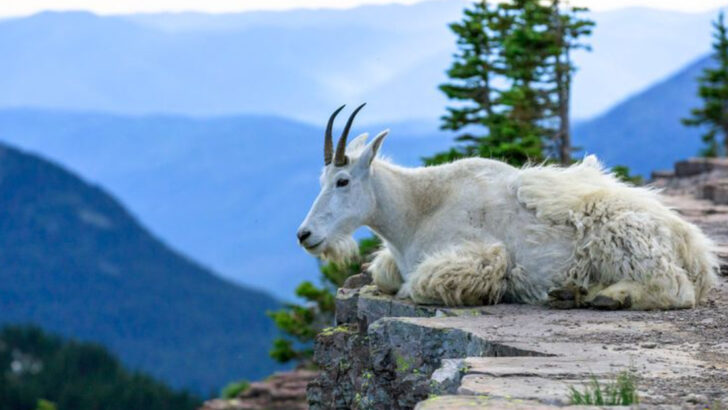Montana feels like it’s straight out of a nature documentary, with its vast, untamed landscapes playing host to a wild array of creatures. From towering mountain ranges to sprawling plains, the state’s diverse habitats are a paradise for wildlife lovers.
In this stunning wilderness, animals roam freely, each one adapting to the rugged beauty that Montana offers. Whether it’s the elusive predator hiding in the forest or a majestic bird soaring above the mountains, every species adds to the magic of this place.
Ready to step into Montana’s wild heart? Join us as we uncover 22 remarkable animals that make this state a living, breathing wildlife wonderland. From their unique behaviors to their incredible resilience, these creatures will leave you in awe of nature’s true power.
Grizzly Bear
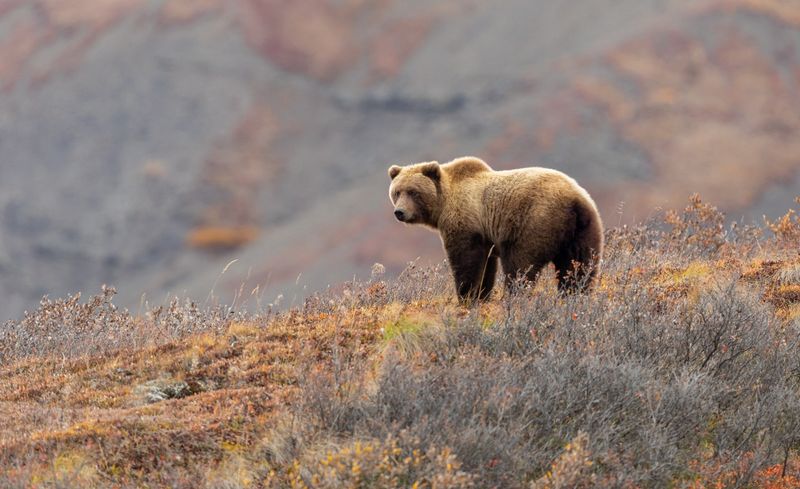
The grizzly bear is one of Montana’s most iconic animals, embodying the wild spirit of the state. These powerful creatures can weigh up to 790 pounds and are known for their distinctive hump and long claws.
Grizzlies are omnivorous and often found foraging in the woods or fishing in the rivers. In Montana, they inhabit national parks like Glacier and Yellowstone, where they roam vast territories.
Observing a grizzly in its natural setting is an unforgettable experience, showcasing the majesty of nature. It’s crucial to admire these animals from a safe distance as they are both protective and unpredictable.
American Bison
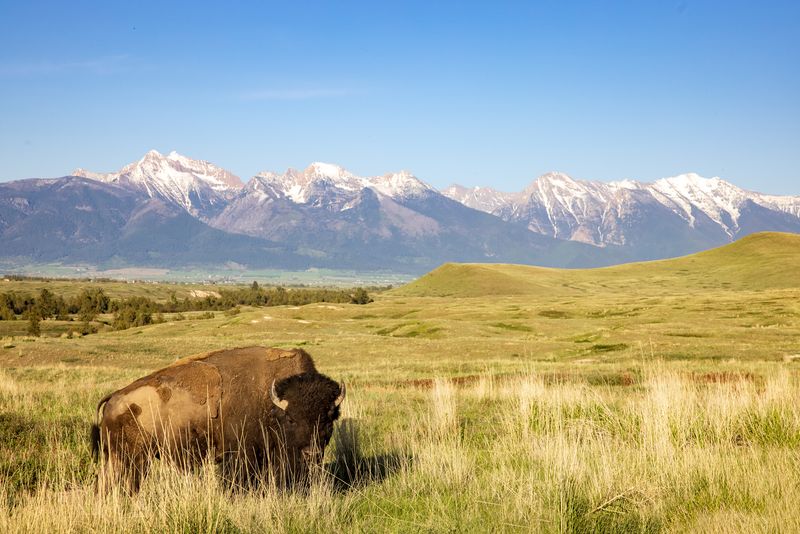
The American bison is a symbol of the Great Plains, often seen in large herds across Montana’s grasslands. These massive animals can weigh over a ton and are equipped with thick, shaggy coats that protect them from harsh winters.
Bison play a crucial role in maintaining the ecosystem by influencing the structure of the vegetation. Their grazing patterns help preserve the prairie, making them essential to the landscape.
Observing a bison herd from afar, you’ll witness a scene reminiscent of the Wild West, complete with the resonance of hoofbeats and the sight of dust clouds.
Bald Eagle
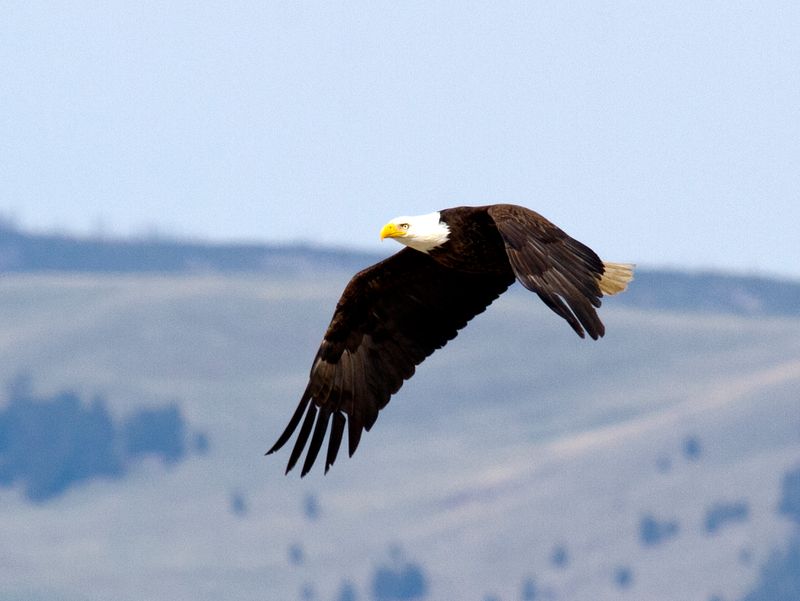
With its striking white head and tail, the bald eagle is an awe-inspiring sight in Montana’s skies. As a top predator, it commands the aerial domain, often seen gliding over lakes and rivers searching for fish.
These eagles are not just symbols of freedom but also an integral part of the ecosystem, maintaining the balance by controlling fish and small mammal populations.
Watching a bald eagle in flight is a majestic experience, its wings spanning over six feet. In Montana, these birds can be spotted near large bodies of water, especially during the winter months.
Mountain Goat
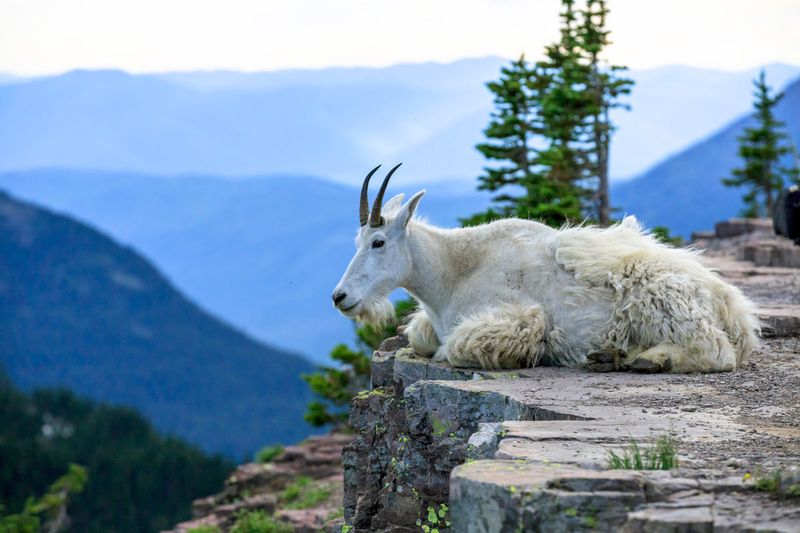
Mountain goats are masters of the steep, rocky terrains found in Montana’s Rocky Mountains. With their thick, white coats and black horns, they are perfectly adapted to cold, rugged environments.
These agile climbers have a unique ability to navigate precarious ledges, often seen scaling cliffs with ease. Their diet consists primarily of grasses and shrubs found at high elevations.
Spotting a mountain goat in its natural habitat is a testament to nature’s incredible adaptations, demonstrating resilience and grace. Their presence in Montana’s high altitudes adds to the state’s allure as a wildlife haven.
Grey Wolf
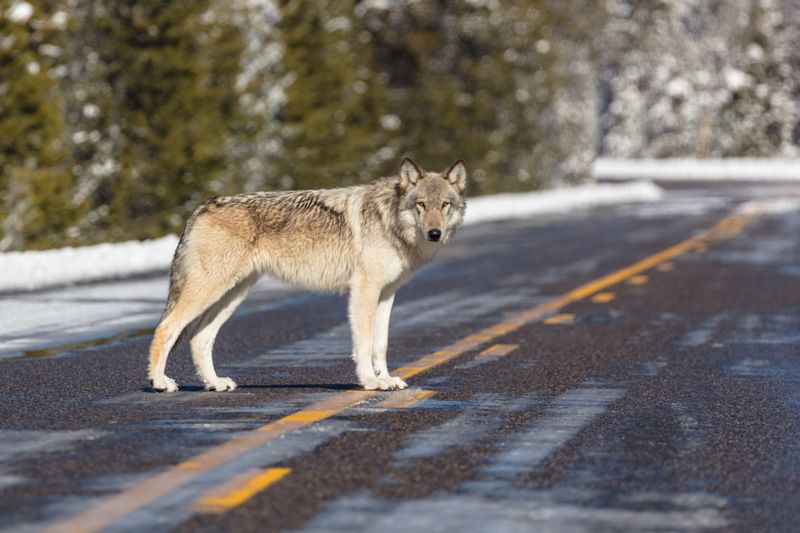
The grey wolf is an emblematic predator, roaming the vast wilderness of Montana in family packs. Known for their intelligence and social structure, wolves play a critical role in regulating prey populations like deer and elk.
Wolves are most often heard rather than seen, their haunting howls echoing through the forests and plains. Their reintroduction to areas like Yellowstone has helped restore ecological balance, showcasing the complex interplay of predator and prey.
Enthusiasts often seek to capture glimpses of these elusive creatures during dawn and dusk when they are most active.
Pronghorn Antelope
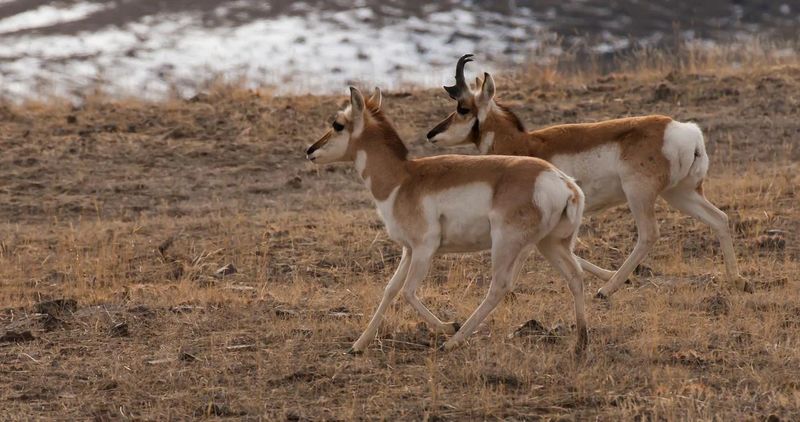
Famed for their incredible speed, pronghorn antelopes are one of Montana’s swiftest creatures, capable of reaching speeds of up to 60 mph. Their aerodynamic bodies and keen eyesight make them adept at avoiding predators.
Pronghorns are often spotted grazing in open fields, their striking white and tan coloration providing natural camouflage. As they migrate across the plains, they contribute to the ecological diversity, interacting with other native species.
Witnessing a pronghorn in full sprint is a remarkable sight, embodying the untouched beauty and vitality of Montana’s landscapes.
Moose
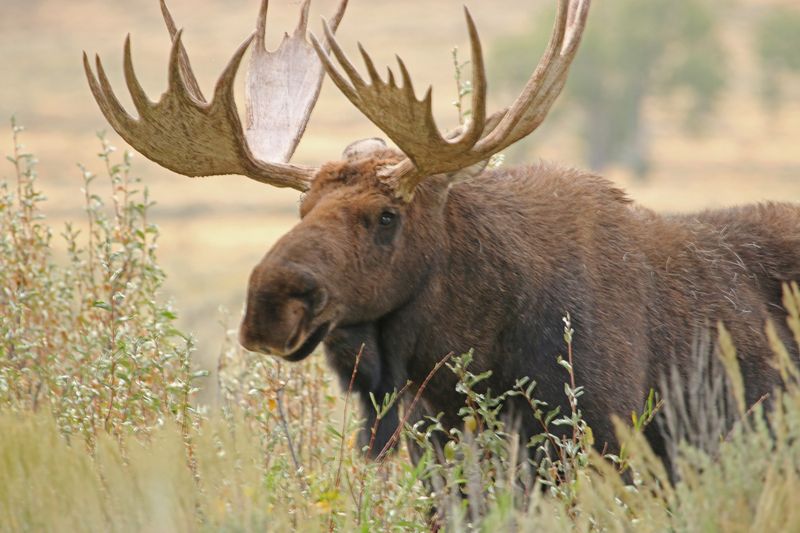
Moose are the largest members of the deer family, known for their imposing size and distinct antlers. In Montana, they are often found in the northern forests and wetlands, appearing solitary yet majestic.
Moose have long legs that allow them to wade through wetlands and snow, feeding on aquatic plants and shrubs. Their presence is a testament to the pristine conditions of their habitats, needing large territories to thrive.
Observing a moose in the wild is a captivating experience, its sheer size and calm demeanor offering a glimpse into the serene side of Montana’s wildlife.
Great Grey Owl
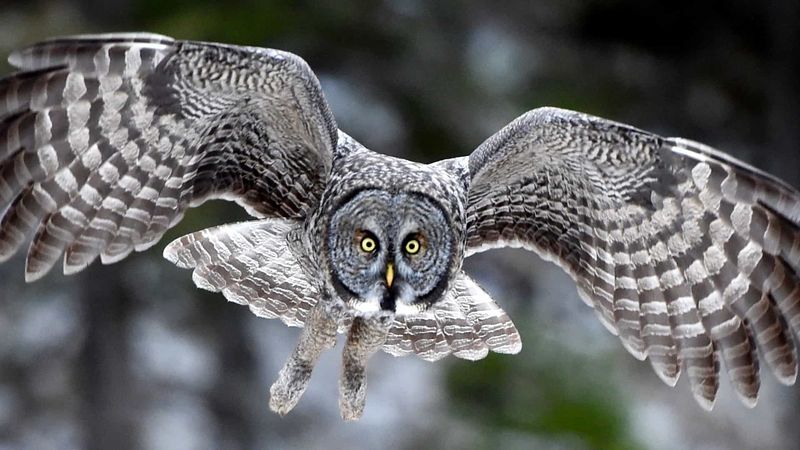
The great grey owl, with its striking plumage and piercing eyes, is a mesmerizing presence in Montana’s forests. Known for their silent flight, these owls are expert hunters, relying on acute hearing to locate prey beneath the snow.
They are often spotted at dusk, their silhouettes blending into the forest backdrop. Great grey owls prefer dense woodland areas where they can hunt in solitude.
Observing one in the wild is a rare treat, offering a silent glimpse into the life of a nocturnal predator. Their presence is a reminder of the unseen mysteries lurking in Montana’s wilderness.
American Elk
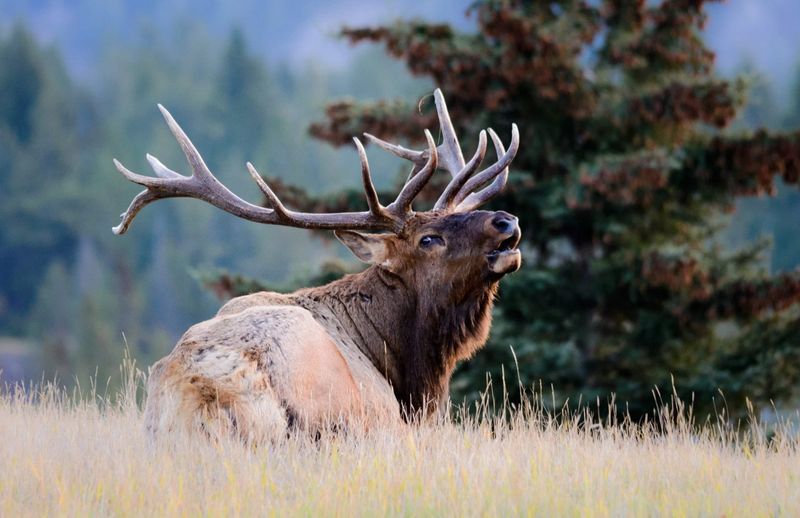
American elk, or wapiti, are impressive creatures known for their bugling calls during the mating season. These large herbivores roam Montana’s grasslands and mountainous regions, often seen in herds.
During autumn, the sound of elk bugling resonates through the valleys, a call that attracts tourists and wildlife enthusiasts alike. Elk play a significant role in the ecosystem, influencing vegetation and serving as prey for apex predators.
Watching a herd of elk in their natural habitat is a quintessential Montana experience, highlighting the dynamic interplay between wildlife and landscape.
Black Bear

The black bear, with its omnivorous diet, thrives in Montana’s diverse ecosystems. Smaller than their grizzly cousins, these bears are adaptable, often seen foraging for berries, insects, and small mammals.
Black bears are generally shy and prefer wooded areas where they can remain elusive. Their presence is vital for the health of the ecosystem as they help control insect populations and disperse seeds.
Spotting a black bear in the wild is a thrilling encounter, reminding one of the delicate balance between humans and wildlife. Always maintain a respectful distance to ensure both safety and conservation.
Trumpeter Swan
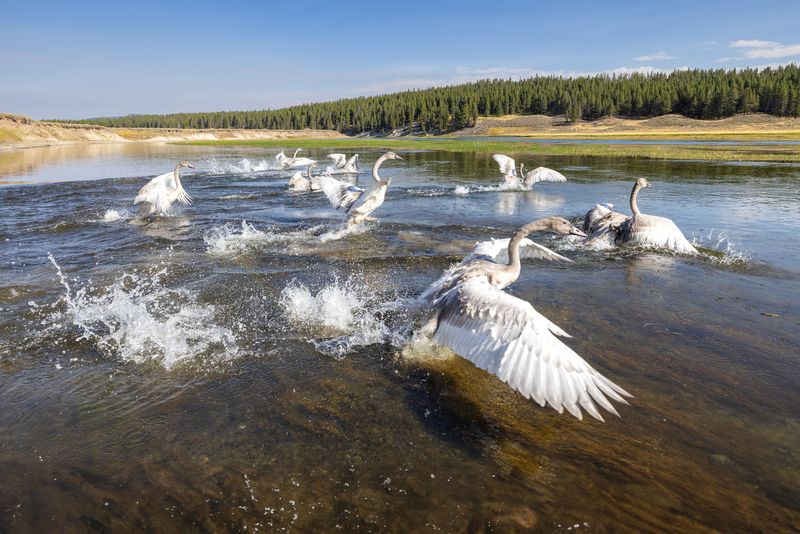
Trumpeter swans, the largest native waterfowl in North America, are a breathtaking sight in Montana’s lakes and rivers. Known for their resonant calls and striking white plumage, these swans epitomize elegance.
They often mate for life, showcasing strong family bonds, and are seen gliding effortlessly on pristine waters. Their presence indicates healthy aquatic ecosystems, as they rely on clean water bodies for food.
Observing a trumpeter swan in flight or gracefully swimming is a serene experience, offering a moment of peace and connection with nature’s beauty.
Wolverine
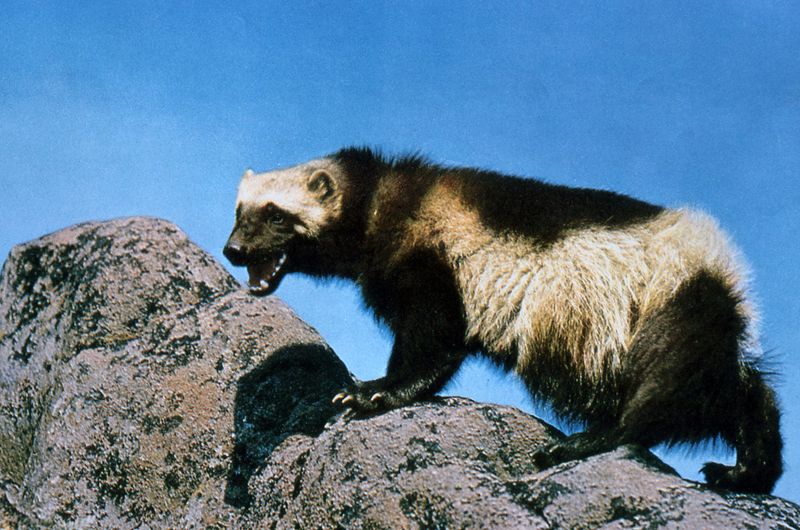
The wolverine is a fierce and solitary carnivore, known for its strength and tenacity. In Montana, they inhabit remote areas, often venturing across vast, snowy terrains in search of food.
Despite their size, wolverines are powerful predators capable of taking down prey much larger than themselves. Their elusive nature makes sightings rare, adding to their mystique.
These animals are critical to the ecosystem, controlling smaller mammal populations and scavenging. Spotting a wolverine in the wild offers a glimpse into the resilience of Montana’s wildlife, showcasing survival against the odds.
Bighorn Sheep
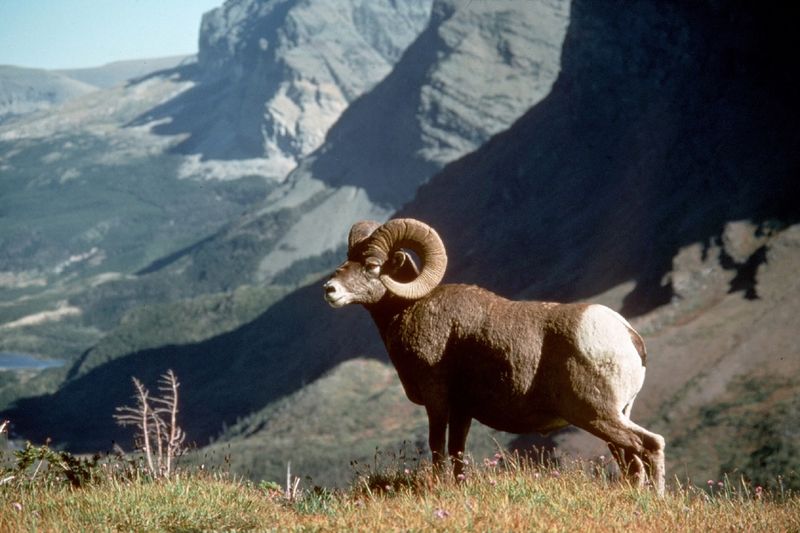
Bighorn sheep are renowned for their agility and strength, often seen navigating Montana’s rocky cliffs and canyons. Their large, curled horns are a symbol of dominance, used in head-butting contests during mating season.
These herbivores are adapted to mountainous environments, feeding on grasses and shrubs. Observing a bighorn sheep in its natural habitat is an awe-inspiring experience, illustrating the harmony between the animal and its rugged surroundings.
Their presence is vital for the balance of the ecosystem, contributing to the biodiversity of Montana’s landscapes.
Peregrine Falcon
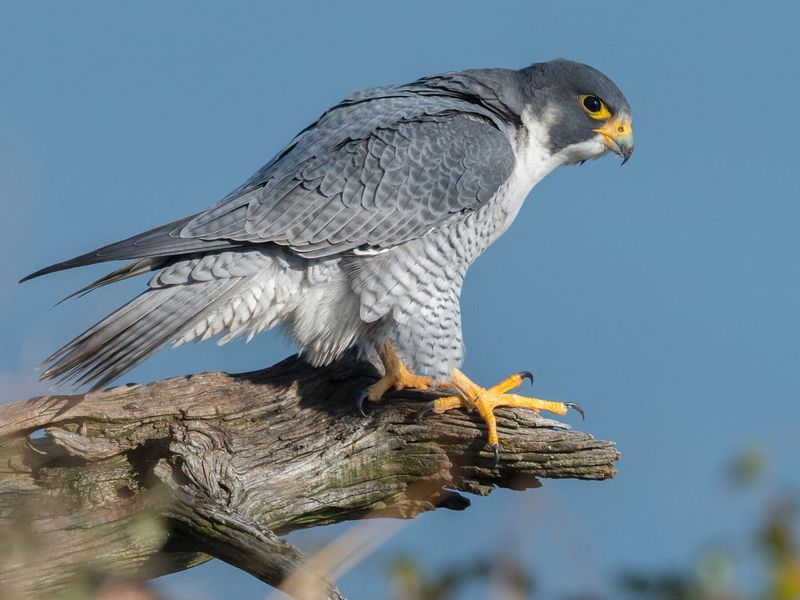
Known for its breathtaking speed, the peregrine falcon is the fastest bird, capable of reaching speeds over 240 mph during its hunting stoop. In Montana, these falcons patrol the skies above open fields and cliffs.
With keen eyesight and swift reflexes, peregrines are extraordinary hunters, preying primarily on birds mid-flight. Their presence serves as an indicator of ecological health, as they require abundant prey and suitable nesting sites.
Witnessing a peregrine falcon in action is an exhilarating sight, showcasing precision and power in the animal kingdom.
Red Fox
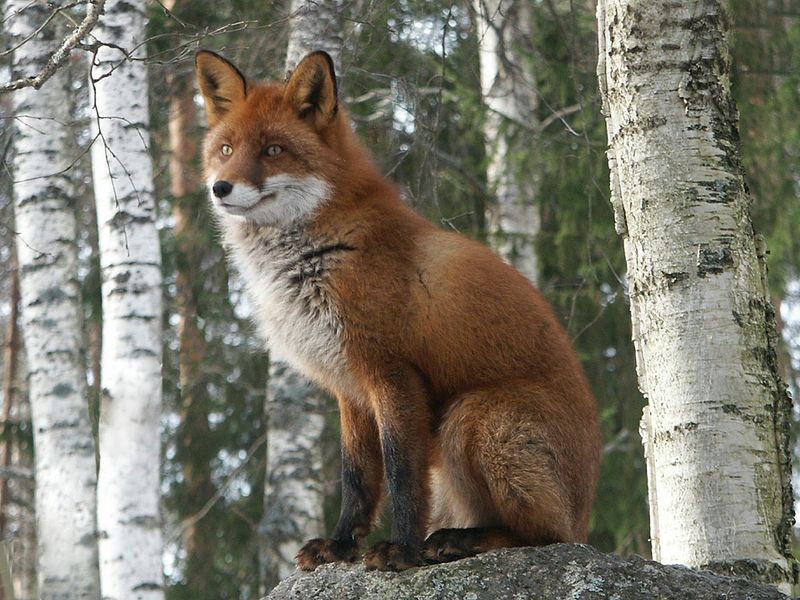
The red fox is a charismatic and adaptable predator, thriving in Montana’s mixed landscapes. With its bushy tail and striking red coat, it’s a familiar sight in both rural and urban areas.
Foxes are known for their intelligence and cunning, often seen hunting rodents, birds, and insects. Their adaptability is key to their survival, allowing them to occupy diverse habitats.
Spotting a red fox in the wild offers a glimpse into the clever strategies of nature’s hunters, as they quietly maneuver through the environment. Their playful antics and keen senses make them a favorite among wildlife observers.
Northern Goshawk
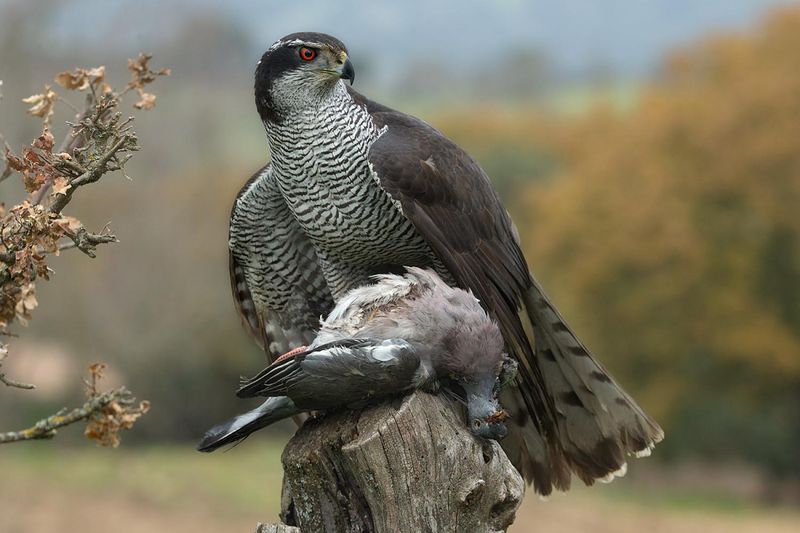
The northern goshawk is a formidable bird of prey, known for its agility and ferocity. In Montana, these hawks patrol dense forests, hunting a variety of smaller birds and mammals.
They are characterized by their striking grey plumage and fierce demeanor, often seen in swift pursuit of prey. Goshawks are masterful hunters, utilizing their agility to navigate through thick foliage.
Observing a northern goshawk in action offers insight into the precision and power of avian predators, a reminder of the intricate balance within Montana’s ecosystems.
American Marten
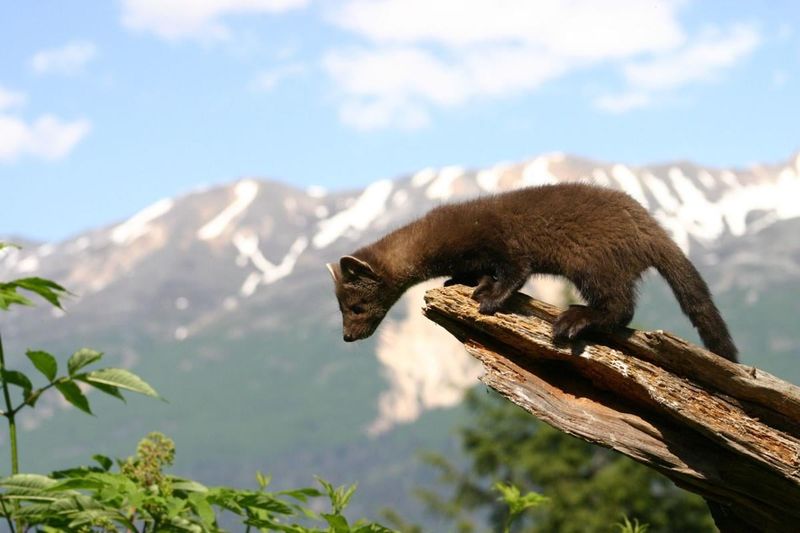
The American marten is a small, agile member of the weasel family, found in Montana’s coniferous forests. Known for their playful behavior and sleek fur, martens are expert climbers, often seen leaping between tree branches.
These carnivorous mammals primarily feed on small rodents and birds, contributing to the control of prey populations. Their presence is indicative of healthy forest ecosystems, requiring dense, undisturbed habitats to thrive.
Spotting an American marten in the wild is a delightful encounter, showcasing the lively and dynamic aspects of Montana’s wildlife.
Common Loon
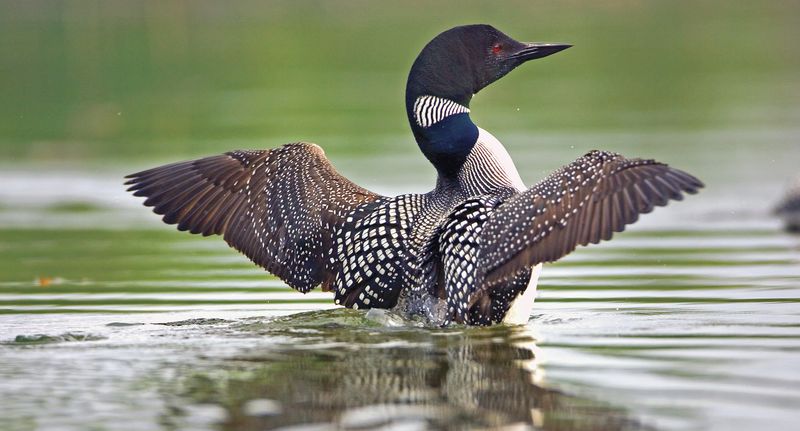
The common loon is a captivating waterbird, renowned for its haunting calls and striking appearance. In Montana, loons are often found on serene lakes, where they dive gracefully in search of fish.
These birds are expert divers, capable of staying underwater for several minutes, and their eerie calls echo across the water, adding to the mystique of Montana’s wilderness.
Loons are indicators of pristine aquatic environments, relying on clean lakes for nesting. Observing a loon in its natural habitat offers a peaceful glimpse into the tranquility and beauty of Montana’s lakes.
Snowshoe Hare
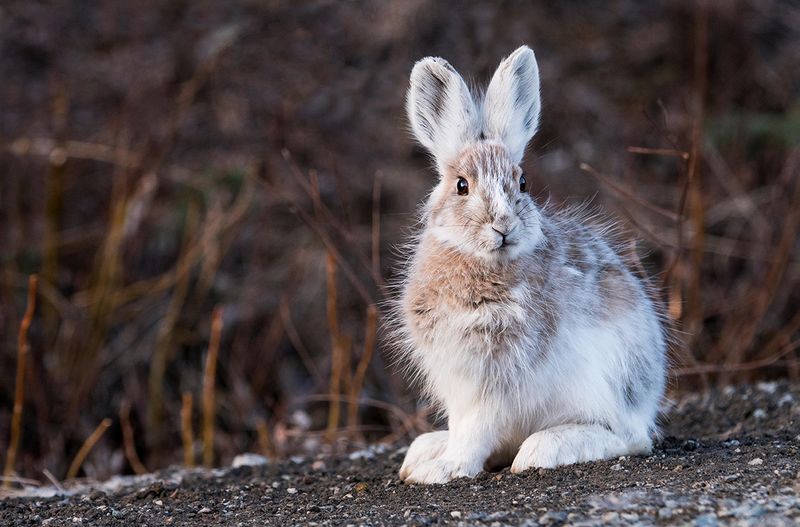
The snowshoe hare, with its large hind feet, is perfectly adapted to Montana’s snowy winters. These hares change color with the seasons, from brown in summer to white in winter, providing excellent camouflage.
Primarily nocturnal, snowshoe hares feed on twigs and bark, playing a crucial role in the food web as prey for predators like lynxes and owls.
Their presence indicates healthy forest ecosystems, reliant on diverse undergrowth for sustenance. Spotting a snowshoe hare in the wild is an enchanting sight, showcasing nature’s adaptability and the intricate connections within Montana’s forests.
River Otter
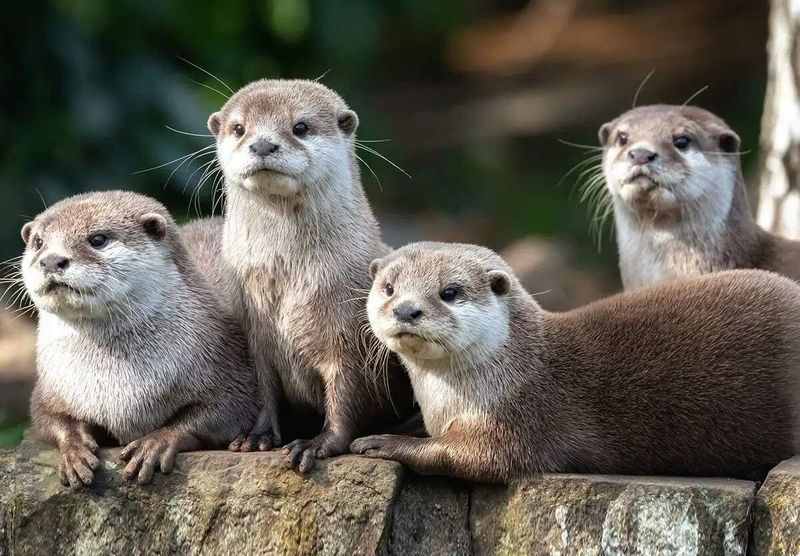
River otters are synonymous with playful aquatic antics, often spotted in Montana’s rivers and lakes. These social creatures are adept swimmers, using their streamlined bodies and webbed feet to navigate swiftly through water.
Otters primarily feed on fish and amphibians, playing a crucial role in the aquatic food web. Their playful behavior and vocalizations make them a delight to observe, offering a joyful glimpse into the life of Montana’s waterways.
River otters are indicators of clean, healthy water systems, making their presence a sign of ecological well-being.
Mischievous Magpie
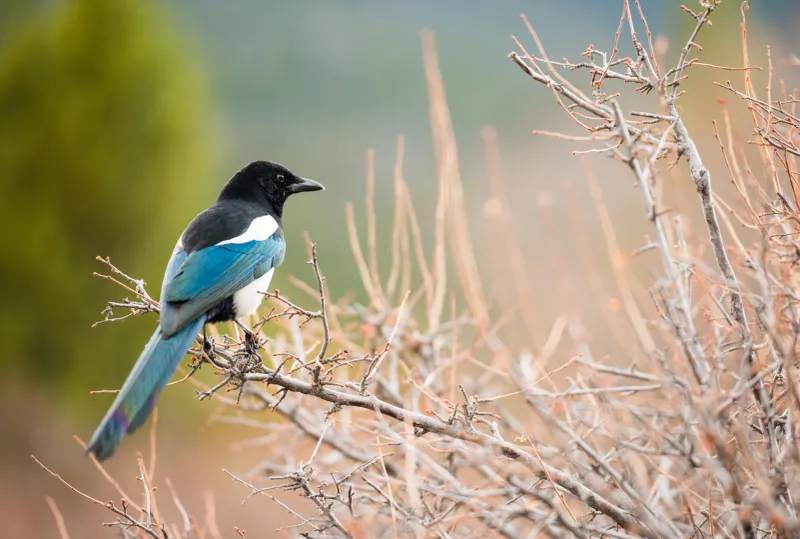
The black-billed magpie, with its striking black and white plumage, often captures attention with its playful antics. These birds are more than just pretty feathers — they’re known for their intelligence and curious nature.
In Montana, magpies are often seen flitting about with a charming audacity, sometimes even mimicking the sounds they hear around them. Whether they’re scavenging for food or simply exploring, these birds bring an element of surprise and delight.
Their adaptability in varied environments makes them a ubiquitous sight in both rural and urban settings, adding a sense of vibrancy to Montana’s ecosystem.
Pine Grosbeak
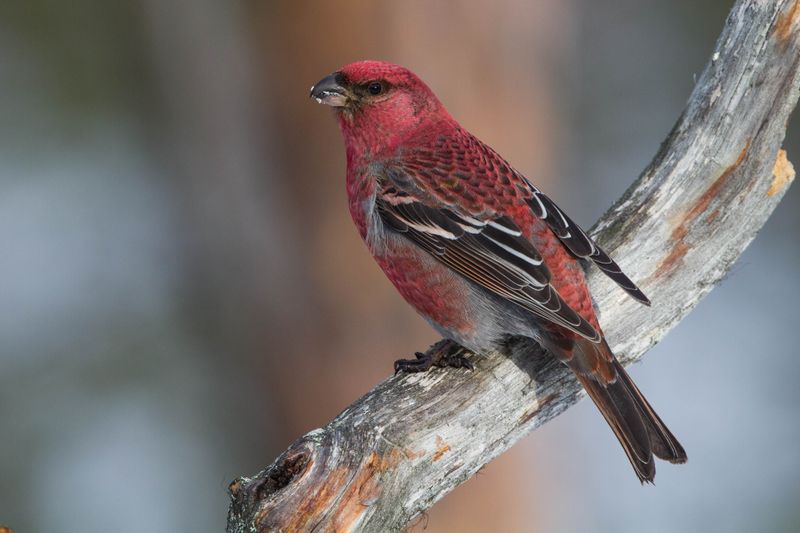
The Pine Grosbeak, a large finch with beautiful pinkish-red coloring, is a delightful sight in Montana’s winter landscapes. These birds are often found in flocks, feeding on seeds and fruits in snow-covered forests.
Their gentle demeanor and melodic calls add charm to the cold winter months. They are a favorite among winter bird watchers, who admire their resilience and beauty.
Spotting a Pine Grosbeak can turn an ordinary winter’s day into a memorable wildlife experience, showcasing the simple yet profound beauty of nature.

